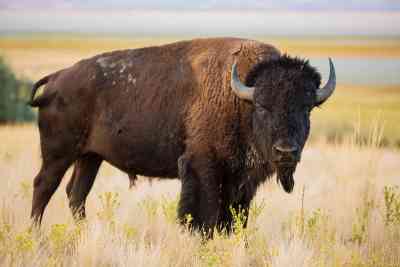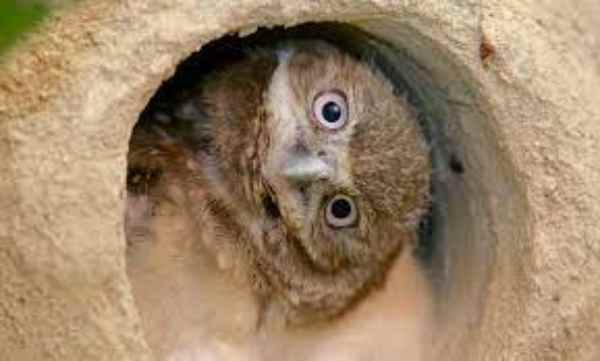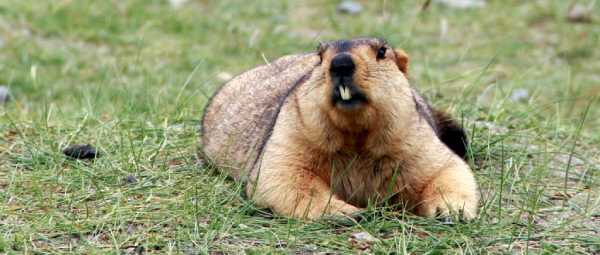Kansas is undoubtedly a breathtaking state that boasts a diverse landscape and an abundance of wildlife species. From the rolling hills to the rocky cliffs, there’s never a dull moment when exploring Kansas’s vast outdoors. As the “Sunflower State,” Kansas is known for its bright yellow fields of sunflowers. Its four seasons bring a mix of scorching hot and humid summers and chilly winters, making it an ideal location for those who want to experience different climates. Wichita serves as the state’s largest city, but Topeka remains the capital.
Table of Contents
Wild Animals in the State of Kansas
Kansas is a haven for wildlife enthusiasts who appreciate the beauty of the natural world. With almost all the animals common to every state in the U.S., Kansas boasts an impressive variety of fauna.
The state is home to many known birds, including the majestic great horned owls, bald eagles, and red-tailed hawks. Kansas also houses its fair share of predators, such as foxes, coyotes and bobcats, which are pretty famous in the U.S. Additionally, the state has a plethora of mammals, including Raccoons, Opossums, Prairie dogs, cottontail rabbits and muskrats.

Some of the native rodents of Kansas include groundhogs, pocket gophers, and mice. It is interesting to note that, unlike other states in the U.S., Kansas only has one species of squirrel- the eastern fox squirrel. While beavers were once hunted for an extended period, Kansas has since introduced several conservation measures to protect these remarkable animals.
The Official Animal of the State of Kansas
Bison, also known as American buffalo, were once a staple of the Great Plains and an integral part of the Native American way of life. Unfortunately, due to overhunting and habitat loss, the bison population dwindled to near extinction in the late 1800s. While bison have returned to other parts of the country, it wasn’t until recently that they made a comeback in Kansas. Today, the state’s once-endangered bison population is thriving, with over 5,000 individuals calling the Sunflower State home. It’s no wonder that bison have now been officially named Kansas’ state animal.
Where can you Find the Top Wild Animals in Kansas?
Kansas, although primarily used for farming and agriculture, boasts a remarkable count of 28 state parks and numerous wildlife preservation zones. These natural havens and conservation initiatives have played a pivotal role in safeguarding the distinct ecosystems of Kansas.
Here are a few notable locations where wildlife thrives abundantly:
- The Tallgrass Prairie National Preserve
- Quivira National Wildlife Refuge
- Cimarron National Grassland
In addition, some landowners, including ranchers and farmers, have taken the initiative to establish sanctuaries for the preservation of lesser prairie chickens. These efforts are carried out under the Conservation Reserve Program, aiming to protect these exceptionally rare avian species. Consequently, individuals are provided with the opportunity to witness these exceptionally rare birds firsthand, considering they are among the most uncommon bird species on Earth.
Dangerous Animals in Kansas
Despite the presence of numerous large animals and formidable predators in Kansas, there have been no reported incidents of these creatures posing a threat to humans. However, there are certain animals that humans should exercise caution around, specifically snakes, spiders, and insects, as they can cause harm.
Spiders, in particular, can be hazardous to humans due to their bites, which can lead to severe allergic reactions and skin bruising. Kansas is home to various spider species, including the black widow, hobo spider, and brown recluse.
Snakes also warrant attention as they can be dangerous. In Kansas, there are two snake species that pose a potential threat to humans: the copperhead and the prairie rattlesnake.
Additionally, ticks, which are parasites, carry diseases that can be harmful to humans. They can be found on wild animals as well as in domestic environments.
Therefore, while the large animals and predators in Kansas are generally not dangerous to humans, it is important to be cautious around snakes, spiders, and insects, as they have the potential to harm humans through bites, venom, or disease transmission.
Endangered Animals in Kansas
The lesser prairie chicken, a native wild bird of Kansas, is currently listed as an endangered species. Once abundant, its population has declined by over 90 percent due to the conversion of farmlands. In an effort to preserve this species, the State’s Conservation Reserve Program has been instrumental in converting cropland areas into grasslands, providing suitable habitat for the lesser prairie chickens to survive. While these conservation efforts have led to population increases, the species remains endangered.
Kansas is also home to several other endangered animals, including:
- Eastern spotted skunk
- Gray bat
- Pallid sturgeon
- Least tern
- Mucket mussel
- Cave salamander
- Strecker’s chorus frog
- Whooping crane
Kansas boasts a diverse range of animal species. When visiting the state, one can observe a variety of creatures, ranging from small rodents to medium-sized mammals and even giant bison.
Armyworm

Armyworms have been causing havoc to crop fields all over the world for centuries now. The species originated from North America, South America, and Central America and has traveled across the planet, thanks to humans. These pests have been found in numerous countries worldwide.
They are usually found in regions with more agricultural land and crop fields, including the United States. The east of the Rocky Mountains is where they settle in countries like the United States. Since farmers feel the brunt of the damage caused by these pests, it’s essential to pick out the signs of an armyworm infestation early on.
Life stages of Armyworm
The life cycle of armyworms encompasses various stages, including eggs, larvae, pupae, and adults. The transformation from egg to adult typically takes around 30 to 50 days. As they progress through each stage, their head size increases, and the color of their head undergoes changes. Once they reach adulthood, they pose a threat to crops as they primarily feed on grasses and agricultural crops.
Armyworms are known to attack in groups, moving from one crop field to another after depleting their food source. They spend the day concealed beneath layers of crop debris and tend to cause extensive damage to crops during their attacks. Their preferred time for feeding is usually at night or on cloudy days. Cornfields are particularly susceptible to their attacks, so farmers with cornfields need to be vigilant about their potential arrival.
The survival of armyworms is threatened by humans, predators, and parasitoids, as agricultural pest control measures are commonly employed to eliminate pests from crops. They can detect the presence of predators through sound, as their hearing abilities are quite keen.
Armyworms are typically found east of the Rocky Mountains, extending northward into Canada. They are capable of flying up to 62 miles per night and can migrate to locations like Colorado. Their growth and population are influenced by weather conditions, with their numbers diminishing during winter. The growth stages of armyworms slow down from the egg to the adult stage during this period.
These voracious pests have a wide distribution, with significant armyworm populations in regions such as Southern Europe, Asia, Africa, South America, and Central America. After colonizing the New World, they spread to each continent they encountered.
During the larval stage, armyworms feed on a variety of plants, including weedy grass, barley, oats, rice, wheat, sugarcane, timothy, corn, and millet. They also consume weeds and large grasses, readily devouring any available foliage in times of scarcity. They can even invade home lawns and fields such as golf courses, damaging the grass and vegetation in their path.
Burrowing Owls

Kansas is home to a diverse array of animals, and one notable species is the burrowing owl. These owls are characterized by their slender build, yellow eyes, lack of visible ear tufts, white eyebrows, and long legs. Interestingly, it is challenging to distinguish between male and female burrowing owls as they exhibit similar physical features.
Despite being proficient flyers, burrowing owls spend a significant amount of time near the ground. They possess remarkable flight capabilities but choose to remain close to the Earth. Different subspecies of burrowing owls exist, each playing a crucial role in their respective habitats by regulating prey populations.
Unlike many other owl species, burrowing owls undertake seasonal migrations. The northernmost populations migrate during the winter months. Breeding occurs in the United States and Mexico during the summer, while during winter, they multiply in Central and South America. However, burrowing owls that already reside in Central and South America do not undertake migration when winter arrives.
These owls can be found throughout the Western Hemisphere, favoring habitats such as grasslands, prairies, agricultural fields, and areas with some vegetation or trees. When it comes to nesting, burrowing owls do not build their own burrows.
Instead, they seek out abandoned burrows created by animals like badgers, desert tortoises, coyotes, prairie dogs, and foxes. However, it’s worth noting that not all burrowing owls rely on pre-existing burrows; some have been observed digging their own. During nest construction, they incorporate dung into the nest, which serves to attract insects and provide a food source for the owls. Additionally, they mark their territory by expanding the home range surrounding the nesting area.
Burrowing owls exhibit heightened activity during the daytime but typically engage in hunting at sunrise or sunset. The rest of their time is filled with various activities such as bathing in puddles or dust, stretching, and observing their surroundings. They have been documented to produce thirteen distinct sounds, most of which are used for defending territory, while some are used for communication with their mates.
As carnivores, burrowing owls primarily feed on insects and arthropods. Their diet includes grasshoppers, crickets, beetles, lizards, snakes, earthworms, amphibians, ground squirrels, and small birds like sparrows.
Marmot

Certainly! I apologize for the confusion earlier. Let’s talk about groundhogs, also known as woodchucks, which belong to the group of ground squirrels known as marmots. The scientific name for the groundhog is Marmota monax. They can be found throughout the United States and Canada and are adaptable to various environments.
Groundhogs are capable of climbing trees, despite their name suggesting they are primarily ground-dwelling squirrels. They are often referred to as whistle pigs due to their ability to emit whistling sounds. When they sense danger or perceive the presence of other animals in Kansas, they use whistling as a means of warning or seeking help from other groundhogs. They are also skilled swimmers and can survive by taking refuge in water if threatened.
These creatures can be easily recognized by their bushy tails and large claws. They typically weigh between 13 to 17 pounds, similar in size to a small dog or a larger domestic cat. While most marmots have yellow incisors, groundhogs have white incisors. They possess a pair of incisors on the upper and lower jaws. Standing at around two feet tall, they have a tail that can reach up to ten inches in length.
Groundhogs are known for their intelligence and exhibit various skills for survival. They communicate with each other through whistling, possess climbing and swimming abilities, and can achieve a top speed of nearly ten miles per hour despite their bulky size. These skills aid them in evading predators and ensuring their survival.
During the winter, groundhogs hibernate. Their body temperature, breaths, heartbeat, and respiration decrease significantly during this period of dormancy. They typically hibernate throughout the winter season and emerge at the beginning of February. However, if the weather conditions are still harsh and unsuitable for survival, they may continue hibernating until the conditions improve.
I hope this provides a clearer understanding of groundhogs and their fascinating characteristics.
FAQs
What animals are common in Kansas?
Kansas’s diverse landscape is home to a variety of animals, including both native and introduced species. The state boasts a thriving population of deer and turkey, as well as smaller mammals such as raccoons, skunks, and opossums. Numerous bird species nest in the grasslands and prairies, including the western meadowlark and the greater prairie chicken. Meanwhile, many species of fish and amphibians inhabit the state’s lakes and streams.
What is the largest animals in Kansas?
The American Bison, also known as the buffalo, takes the crown as the largest animals in Kansas. These magnificent creatures can weigh up to 2000 pounds and stand over six feet tall at their shoulders.
Does Kansas have wolves?
While historically there has been evidence of grey wolves in the region, they were largely hunted and eradicated from the state by the early 1900s. Today, some reports suggest there may be a few individual wolves wandering into Kansas from neighbouring states such as Colorado and Oklahoma. However, there is no known breeding population of wolves in Kansas, and the state has no official management plan for the species.
Final Words on Animals in Kansas
Kansas is a state with a long-standing reputation for agriculture, with over 90 per cent of its land dedicated to farming. This reputation has been built upon the major crops of cotton, corn, soybeans, and wheat. Kansas’s fertile land and expert farmers have allowed it to become a leading producer of these crops, contributing significantly to the nation’s food production. But agriculture is not the only thing that makes Kansas unique. The areas not under agriculture cultivation still hold their own beauty, with mixed short and tall prairies that showcase the state’s diverse natural environment.
Reference:
- https://www.wildlife.k-state.edu/species/
- https://www.nps.gov/tapr/learn/nature/animals-of-the-flint-hills.htm
- https://outsider.com/outdoors/viral/video-appears-to-show-black-wolf-roaming-kansas-city/

Jeevan Kodiyan
An animal enthusiast with an interest in zoology, studying the behavior and activities of animals in the wild habitat. I work on research projects related to species conservation and endangered species protection. I also leverage zoology to become an educator, educating others about the importance of protecting our natural environment and the beauty of animals in their natural habitats.









